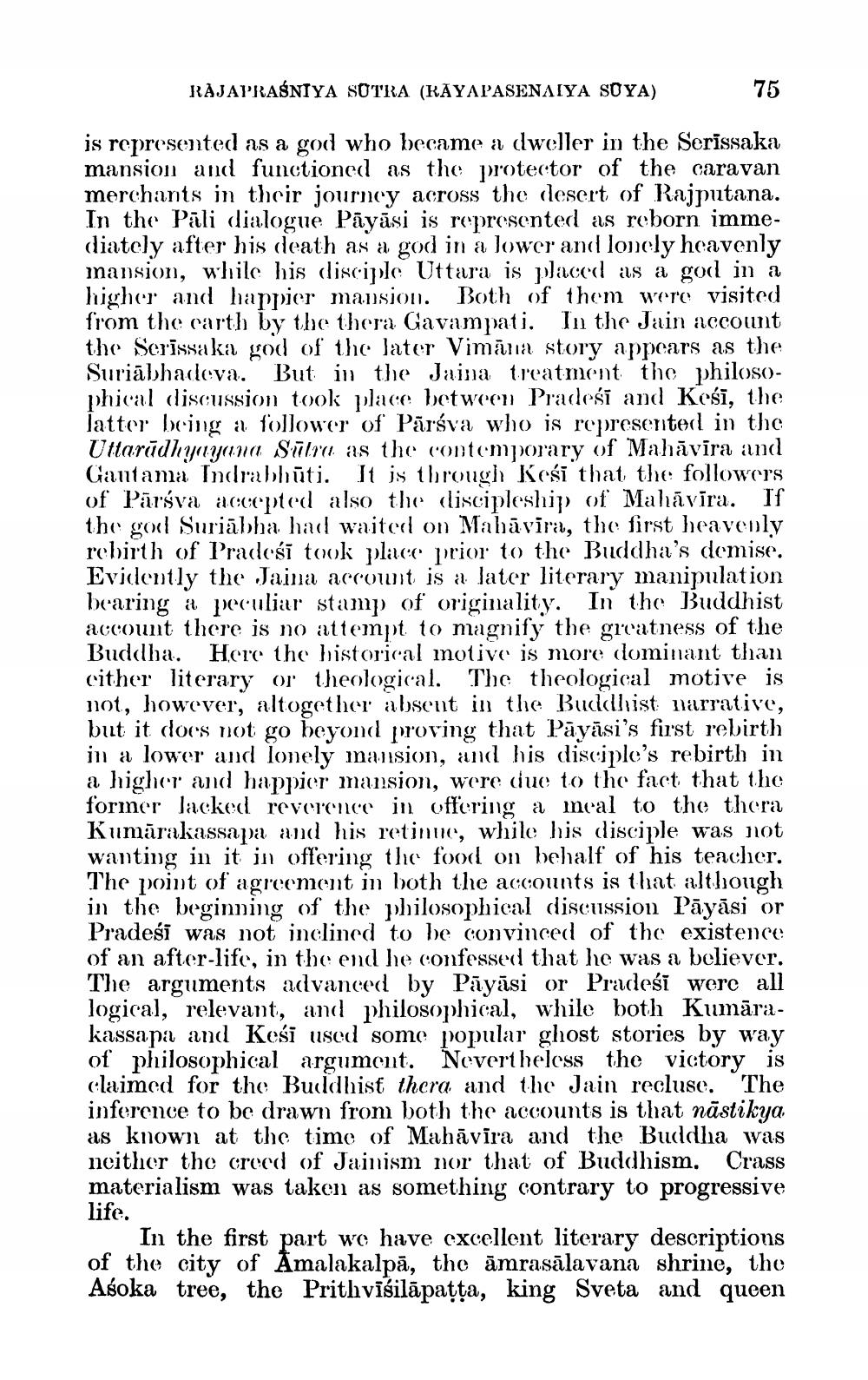________________
RAJAPRAŚNIYA SOTRA (RAYAPASENAIYA SOYA)
75
is represented as a god who became a dweller in the Serīssaka mansion and functioned as the protector of the caravan merchants in their journey across the desert of Rajputana. In the Pāli dialogue Pāyāsi is represented as reborn immediately after his death as a god in a lower and lonely heavenly mansion, while his disciple Uttara is placed as a god in a higher and happier mansion. Both of them were visited from the earth by the thera Gavampati. In the Jain account the Serīssaka god of the later Vimāra story appears as the Suriālhadova. But in the Jaina treatment the philosophical discussion took place between Pradeśī and Keśī, the latter being a follower of Pārsva who is represented in the Uttarūdhyayana Sūlra as the contemporary of Mahāvīra Gautama Indrabhūti. It is through Kesi that the followers of Pārsva accepted also the liscipleship of Mahāvīra. If the goc Suriābha had waited on Malāvira, the first heavenly rebirth of Pradesī took place prior to the Buddha's demise. Evidently the Jaina accowit is a later literary manipulation bearing a peculiar stamp) of originality. In the Buddhist account there is no attempt to magnify the greatness of the Buddha. Here the bistorical motive is more dominant than cither literary or theological. The theological motive is not, however, altogether absent in the Buddhist narrative, but it does not go beyond proving that Pāyāsi's fust rebirth in a lower and lonely mansion, and his disciple's rebirth in a higher and happier mansion, were due to the fact that the former lacked reverence in offering a meal to the thera Kumārakassapa and his retinue, while his disciple was not wanting in it in offering the food on behalf of his teacher. The point of agreement in both the accounts is that although in the beginning of the philosophical discussion Pāyāsi or Pradesi was not inclined to be convinced of the existence of an after-life, in the end he confessed that he was a believer. The arguments advanced by Pāyāsi or Pradeśī were all logical, relevant, and philosophical, while both Kumārakassapa and Kesi used some popular ghost stories by way of philosophical argument. Nevertheless the victory is claimed for the Buddhist thera and the Jain recluse. The inference to be drawn from both the accounts is that nāstikya. as known at the time of Mahāvīra and the Buddha was neither the creed of Jainism nor that of Buddhism. Crass materialism was taken as something contrary to progressive life.
In the first part we have excellent literary descriptions of the city of Amalakalpā, the āmrasālavana shrine, the Asoka tree, the Prithvišilāpatta, king Sveta and queen




